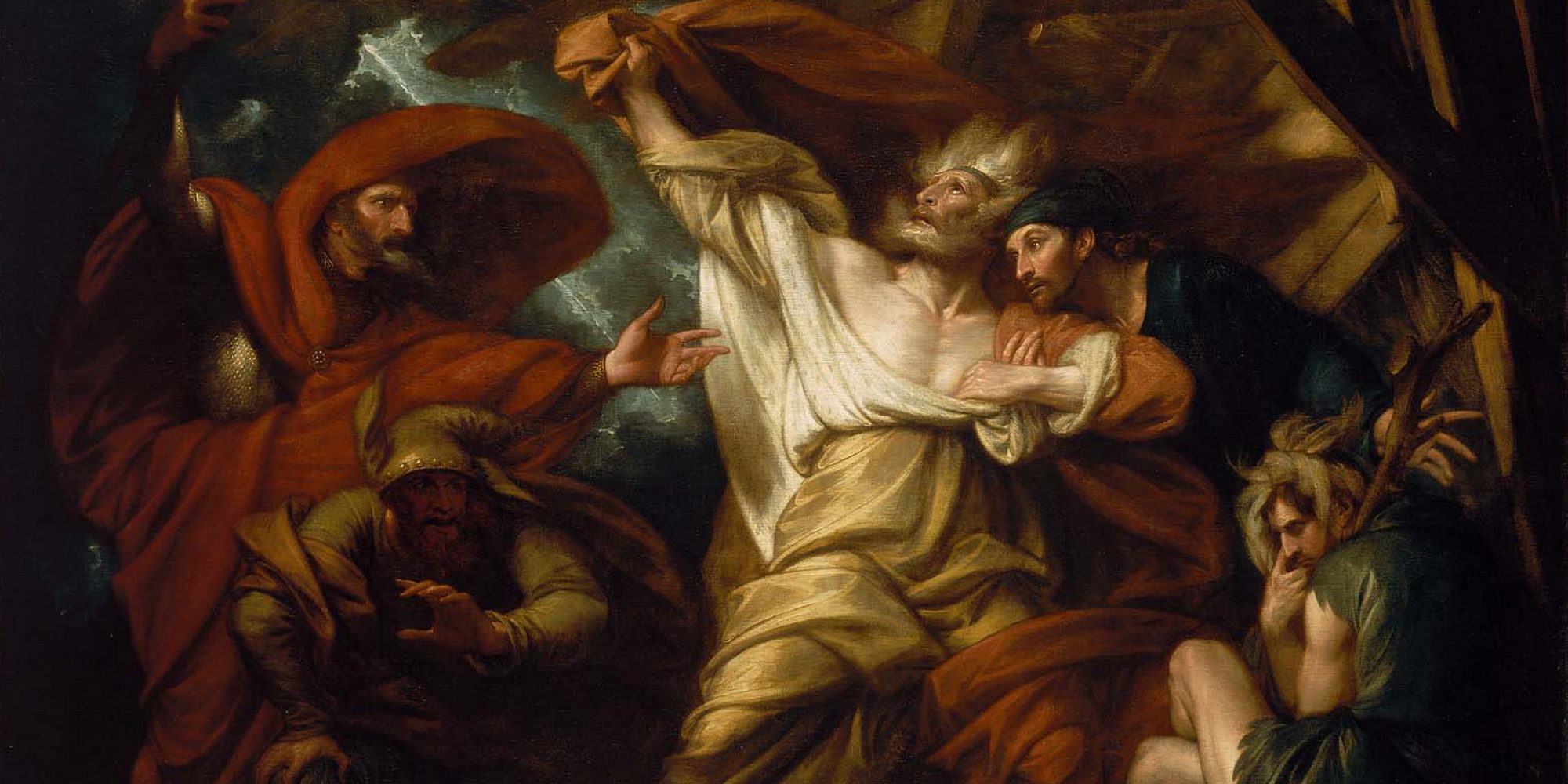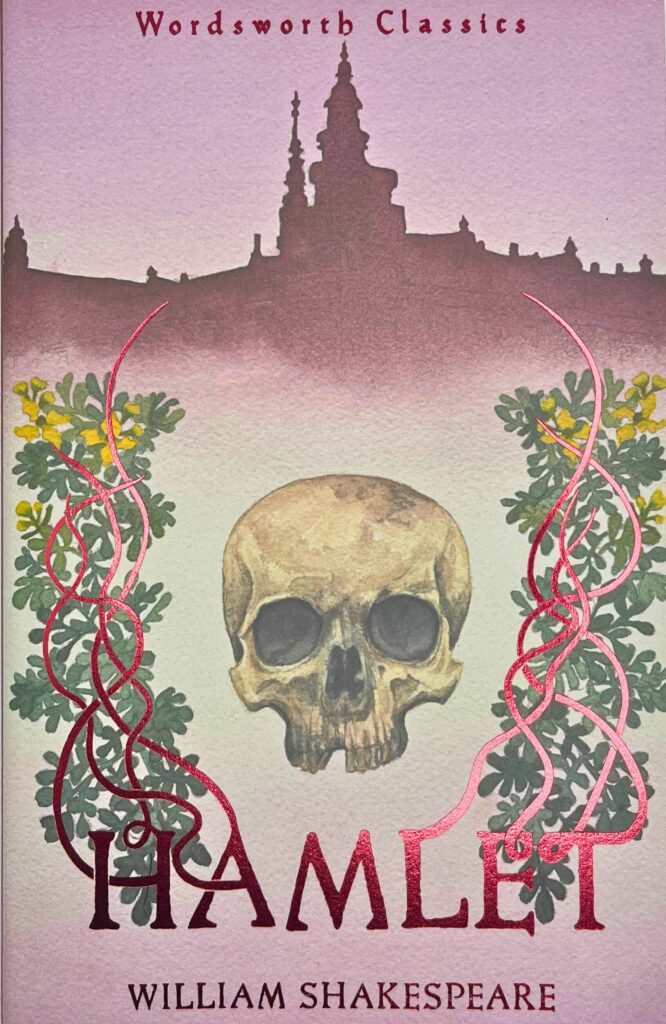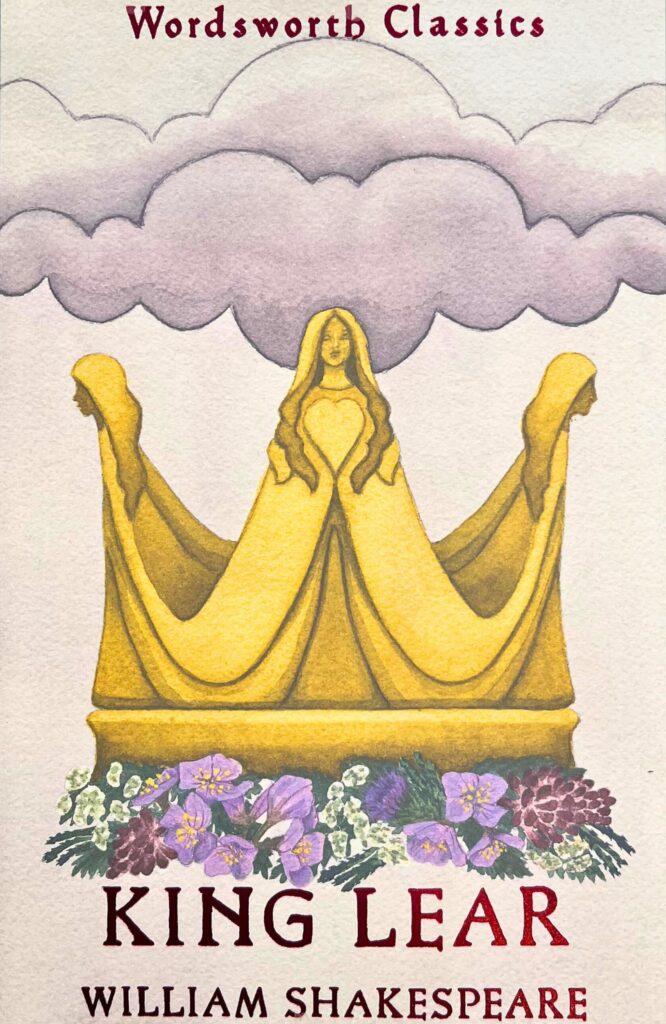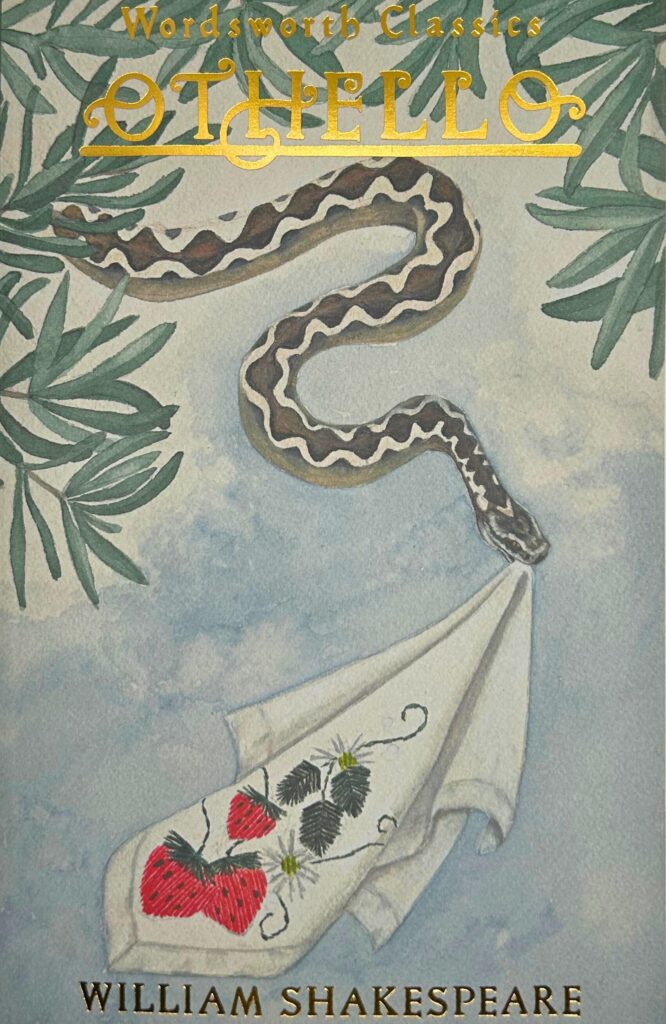
Shakespeare’s Muddles
The Bard Embraces Impossibilities – Cedric Watts explains.
When writing the introduction to the Wordsworth edition of Shakespeare’s Othello, I discussed the play’s notorious ‘double time scheme’. It was Thomas Rymer who, in the 17th century, pointed out that there was something very peculiar about the chronology of Othello: so peculiar, indeed, as to render impossible the repeated adultery of which Desdemona is accused by Othello. But this is not the only case of a chronological oddity in Shakespeare’s works; and, frequently, the plays offer us cultural impossibilities too.
In Titus Andronicus, the setting is pagan Rome. Shakespeare draws on several phases in Rome’s history, but the culture is pre-Christian without a doubt. The deities invoked by characters include Enceladus and Pallas (Greek), and Mercury, Virgo, Saturn, Diana, Jupiter and Astraea (Roman). Demetrius recognises a quotation from Horace, and Lavinia displays Ovid’s Metamorphoses. But then, see what happens in Act 4, scene 4. In strolls a Clown (we may take the word ‘Clown’ to mean ‘a rural proletarian’), and when Titus asks him for a message from the god Jupiter, he says:
Alas, sir, I know not Jubiter; I never drank with him in all my life.
He is employed by Titus to take to Emperor Saturnine a letter demanding justice. This is how the Clown addresses the emperor:
God and Saint Stephen give you godden. I have brought you a letter and a couple of pigeons here.
In Shakespeare’s plays, clowns sometimes have the magical pilot’s licence to fly through time and space. This Clown seems to have arrived from Shakespeare’s rural England, bringing an incongruous Christian greeting to the ruler of pagan Rome. Some moments of surrealistic comedy ensue; for Saturnine, understandably infuriated, cries: ‘Go, take him [the Clown] away and hang him presently,’ The Clown responds with an exclamation (invoking the Virgin Mary) and a jest:
Hanged, by’ Lady! Then have I brought up a neck to a fair end.
Here we see that the comedy involving the Clown derives a bit of its humour from the wit (‘fair end’ meaning both ‘beautiful head’ and ‘just death sentence’) and most of its humour from its obvious breach of theatrical decorum as a clownish insouciant Christian intrudes into grim pagan Rome: anarchic fun within a gory tragedy.
If we seek cultural and chronological muddles, there is no better play than Hamlet. Just ask yourself, ‘In what time is the action set?’, and you will find numerous answers. Much of the time, the action seems contemporaneous with Shakespeare’s days. Hamlet himself often expresses a modern, sceptical sensibility. The duel is fought with rapiers. There is a discussion of the controversial success of the child actors in the city: and this clearly refers to the city of London, not a city in Denmark, for ‘The Children of the Chapel’, a company of boy actors in London’s Blackfriars Theatre, became fashionable in 1600 and 1601. On the other hand, Hamlet’s father, with his full armour including a helmet with a visor, seems to belong to an earlier period, perhaps mediaeval; and the Ghost says he comes from Purgatory (which Catholics believed in but Protestants denied). Yet Hamlet, with modern scepticism, describes death as that bourn from which no traveller returns, even though he has recently met such a traveller. In Act 4, scene 3, Claudius says that the English court will carry out his instruction that Hamlet is killed there because England has so recently been punished by Danish forces and is obliged to pay tribute. This refers to the period between the ninth and eleventh centuries when England was obliged to pay massive sums of ‘protection money’ (the ‘Danegeld’) to the powerful Danes. So, culturally, geographically and chronologically, the play contains some striking inconsistencies.
Furthermore, in 1931, the critic A. J. A. Waldock argued persuasively that Hamlet’s character is complicated because it is a palimpsest – a muddle of old and new. Part of the time, as when Hamlet says ‘Now could I drink hot blood’ and ruthlessly dispatches Polonius, Rosencrantz and Guildenstern, we are encountering the ruthless Amlothi or Amleth (a name meaning ‘Dimwit’) of the ancient Danish source-tale; and part of the time, in contrast, we are hearing the sophisticated, sensitive Hamlet whom Shakespeare has introduced. Our Hamlet lurches between brutal action and, in contrast, sensitive introspection and civilised humanity; and this is because the nastiness of the ancient progenitor is repeatedly infiltrating the likeable modern character.
In King Lear, the cultural and chronological references are, again, a muddle.
The legendary Lear was a pre-Christian leader, and characters invoke ‘the gods’, Jupiter, Juno, Apollo, Hecate and Nature: so the action seems to be located in a post-Roman but pre-Christian Britain. Yet the characters also invoke God, Satan, Adam and Eve, St Mary, churches and holy water: so at those times, the action seems to be taking place in the Christian era. Other references, to Tom o’Bedlam, schoolmasters, spectacles, and fops who frequently visit the barber, for instance, suggest times contemporaneous with Shakespeare’s. In Act 3, scene 2, however, the Fool tells the audience that he lives before the time of Merlin (the legendary Welsh magician described by Geoffrey of Monmouth in the 14th century); but, at the end of Act 1, scene 5, he is clearly contemporaneous with the actual performance in the Jacobean theatre, for he says that any virgin in the audience who dares to laugh as he goes off-stage will soon be deflowered. No wonder Samuel Johnson complained that Shakespeare ‘commonly neglects and confounds the characters of ages by mingling customs ancient and modern.’ We might also ask what becomes of Lear’s many knights, who seem to vanish as the story advances: fair-weather friends or poor map-readers? And, notoriously, the Fool disappears without explanation. (When Lear says ‘And my poor fool is hanged’, editors explain that ‘fool’ could be a term of endearment, so the reference is to Cordelia. But the phrasing naturally brings the male Fool to mind, and thus renders conspicuous his absence from Acts 4 and 5. One theory is that the actor who played the Fool also played Cordelia.)
From the time of Geoffrey Chaucer to the late 17th century, authors frequently muddled cultural allusions – often mixing, with bizarre inconsistency, the classical and the Christian. For example, at the end of Chaucer’s Troilus and Criseyde (written circa 1385), the spirit of the slain pagan Troilus ascends to Heaven, scorns the vanity of the world which contrasts so greatly with the felicity which Heaven provides, and then goes to the place allotted to him by the Roman god Mercury. In John Milton’s elegy Lycidas (written in 1637), the mourning poet is consoled by Phoebus Apollo, the Hellenic god, before he declares that Jesus has granted Lycidas a place in Heaven, Nevertheless, given the intense religious questioning within King Lear, the muddle there becomes frustratingly prominent. As the nature and, indeed, the very existence of divine justice are fiercely debated in the play, the theological inconsistencies become tantalising.
Among the comedies, The Merry Wives of Windsor offers us remarkable chronological confusion. The play contains allusions to the Royal Order of the Garter ceremonies at Windsor in 1597, and the work’s general tone fits the 1590s. But the presence of Falstaff and his cronies Pistol, Nym and Bardolph, together with Nym and Mistress Quickly, implies the early 15th century (the fictional time of Henry IV, Part Two, in which these characters appear). Page tells us that young Fenton (who is now reformed) ‘kept company with the wild prince [Hal, later Henry V] and Poins’; and Henry lived from 1386 to 1422. The Merry Wives of Windsor thus seems to be a comedy of the 1590s in which characters from an earlier century have been incongruously resurrected. This Falstaff proves to be an inferior relative of the brilliantly subversive Falstaff of the histories, whose poignant death was reported in Henry V.
In the late Romances (Pericles, Cymbeline, The Winter’s Tale and The Tempest), we encounter another rich mixture of allusions. A notable example of a muddle occurs in The Winter’s Tale. The very title is odd, since much of the action takes place in summer, the sheep-shearing time. In that play, the declaration by the oracle of Apollo is crucial to the plot, Perdita invokes Jove, and Hermione praises the gods; yet, early on, there is a reference to the Christian doctrine of original sin; later, Perdita speaks of ‘Whitsun pastorals’, and Autolicus (that, and not ‘Autolycus’, is how the First Folio spells his name) mentions not only the Prodigal Son but also hallowed items which ‘brought a benediction to the buyer’. Camillo mentions Jesus and Judas. We are told that a statue of Hermione has been completed by the famous Giulio Romano, and he was a real-life architect and sculptor who died as recently as 1546. Autolicus, with his songs, tricks, and thieves’ slang, belongs distinctly to Shakespeare’s day, as do the country folk at their festival. The currency of Bohemia proves to be pounds and shillings. Thus, the historical era veers to and fro between ancient and modern, while the cultural frame of reference is sometimes polytheistically classical and sometimes strongly Christian. At times we are located in ancient Sicily and at other times the location seems to be Shakespeare’s Warwickshire. Although Sicily was the traditional homeland of pastoral poetry, here Bohemia is the main provider of pastoralism. Hermione is eventually found to be alive, even though her death had been reported and believed (and she had presumably been buried, for Leontes often prayed at her grave), and her ghost had appeared to Camillo. Ghosts surely emanate from the dead, not from the living. Another oddity: in Act 4, scene 1, the character Time tells us that sixteen years elapse, but the very next scene says that fifteen years have elapsed. Thus, muddles abound. Because parts of the play are remarkably intelligent, its apparent stupidities become more noticeable. Notice that in The Tempest, Shakespeare elegantly coordinates the religious (Christian and classical) and sceptical allusions: for example, in the masque of Ceres, Iris and Juno, the deities are played by spirits at Prospero’s command. Here is no muddle but an exquisite harmony.
I began this essay with a reference to the famous ‘double time scheme’ of Othello. You’ll recall how it operates. Iago persuades Othello that Desdemona has committed adultery with Cassio – not once but on numerous occasions. But only thirty-three hours or so elapse between Desdemona’s arrival on Cyprus and her death at Othello’s hands. No time for repeated adultery to occur. But the play also contains some inconsistent ‘long-time’ references: for example, Bianca’s reproaches to Cassio that he has neglected her for a week, and Emilia’s claim that Iago has asked her ‘a hundred times’ to steal the handkerchief. So audiences, while sensing that something is amiss, tend to accept as plausible the sequence of events. The variable clock probably makes us sympathise more with Othello; for, as he is fooled by Iago’s manipulation of evidence, we may sense subliminally that we are fooled by Shakespeare’s: our plight has analogies to Othello’s. What is subliminal to audiences in the theatre may, of course, be fully conscious to readers in their studies, for readers have the leisure to pause and look forwards and backwards to assess temporal consistency or the lack of it, and textual editors draw attention to discrepancies.
Shakespeare was indeed a maestro of the double time scheme: he uses it in Love’s Labour’s Lost, Richard II, The Merchant of Venice and Measure for Measure, for example. The playwright intensifies the drama by compressing the action, but that produces a chronological split. The action in the foreground is rapid, but its plausibility depends on the inconsistently longer time scale indicated by ‘long time’ allusions. In Measure for Measure, the main dramatic events concerning Angelo, Claudio and Isabella (from the time of Claudio’s arrest to the return of the Duke) seem to take only four or five days: in 1.2.59-61, Overdone says that Claudio is to be executed ‘within these three days’. The period of the Duke’s supposed absence, however, appears to take months rather than days: he is thought to have travelled as far as Poland, Rome, or even Russia; and, in his guise as ‘Friar Lodowick’, he becomes well established, paying frequent visits as an advisor to Mariana. The tribulations of Overdone and Pompey imply a longer time span than is appropriate to Claudio’s desperate plight.
Thus, suspense is maintained by our sense that the Duke must act very speedily to save Claudio and outwit Angelo, while the long-time references enable us to believe that Angelo’s rule has become fully established and its many consequences unfolded. Strangely, in this play, the anomalies seem to matter little to theatre audiences, perhaps because of the intensity of the short-time drama. Readers of the play, in contrast, as we have noted, have greater leisure to question the chronology. In the theatre, human memory becomes fallible as we concentrate on the ‘human interest’. We know that Elizabethan and Jacobean plays often lack the chronological discipline that we expect in many a modern novel, so we may stifle expectations of precision. In any case, awareness of a double time scheme may remind us that in everyday life we experience time as multiple and contradictory: the electric clock says one thing; the mental clock (varying its pace in pleasure and pain, retrospection and anticipation, dreaming and waking) says another.
The marked contrast between the untidy Winter’s Tale and the elegant Tempest, written within a year or so of each other, shows that Shakespeare was well able to curb muddles and provide orderly drama when he wished. The fact that two of his most muddled tragedies, Hamlet and King Lear, are among his greatest achievements is surely a tribute to the power of audiences, actors and directors to magnify the human drama and to veil or minimise the inconsistencies. When Polonius says that he will treat the players ‘according to their desert’, Hamlet responds:
God’s bodkin, man, much better! Use every man after his desert, and who shall scape whipping? Use them after your own honour and dignity: the less they deserve, the more merit is in your bounty.
Such generosity of spirit must often have greeted Shakespeare’s muddles. Indeed, we (readers, and spectators) are Shakespeare’s constructive co-authors.


